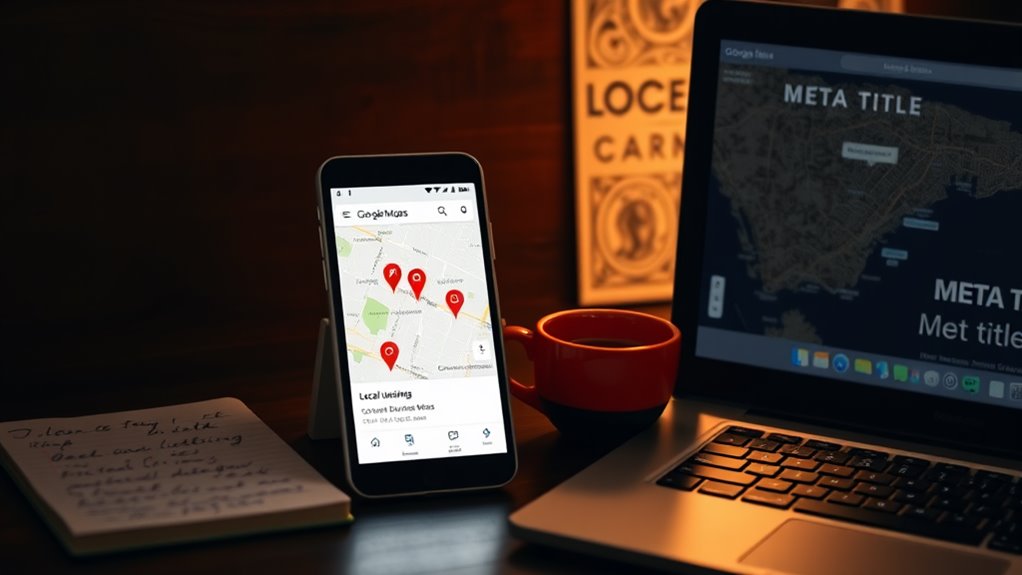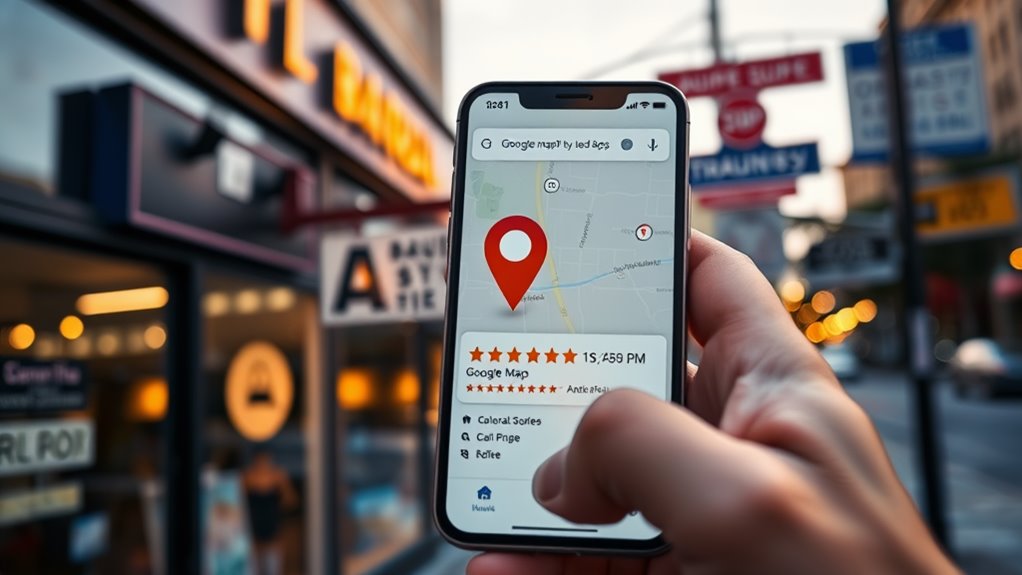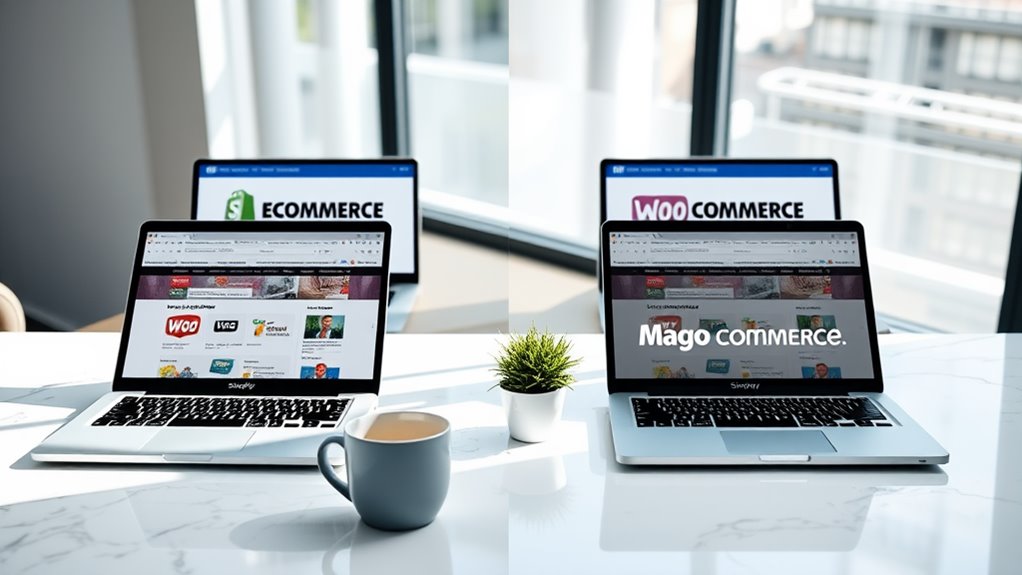To start your local SEO journey, you'll need to focus on five core elements: Google My Business optimization, local citations, on-page elements, customer reviews, and local content. Begin by claiming and verifying your Google My Business listing, ensuring your business information (name, address, phone) is consistent across all platforms. Create location-specific website content, including optimized title tags and meta descriptions with your city name. Build quality citations on authoritative sites like Yelp and Yellow Pages, while actively managing customer reviews. Implement a local content strategy featuring area-specific blog posts and landing pages. The following sections will equip you with detailed strategies for each component.
Key Takeaway
- Create and optimize your Google My Business profile by verifying your listing and adding accurate business information, photos, and description.
- Ensure your business name, address, and phone number are consistent across all online directories and citation websites.
- Optimize your website with location-specific keywords in titles, headers, and content while maintaining proper local SEO structure.
- Actively collect and respond to customer reviews on Google and other platforms to build trust and local visibility.
- Develop location-specific content that targets your service areas and demonstrates community involvement through blog posts and landing pages.
Google My Business Optimization
Optimizing your Google My Business (GMB) profile is the foundation of local SEO success. To maximize your local visibility, you'll need to focus on several key optimization elements that directly impact your rankings.
Essential GMB Optimization Steps:
- Claim and verify your business listing using Google's verification process
- Choose accurate primary and secondary business categories
- Input complete, consistent NAP (Name, Address, Phone) information
- Upload high-quality photos (minimum 10) of your business, products, and team
- Write a keyword-rich business description (750 characters max)
Advanced Optimization Tactics:
- Post weekly updates about promotions, events, or news
- Respond to all customer reviews within 24-48 hours
- Add your business hours, including holiday schedules
- Include your service area radius if you're a mobile business
- Add relevant business attributes (e.g., "wheelchair accessible," "free WiFi")
Monitoring and Maintenance:
- Check your GMB insights monthly for performance metrics
- Update your listing whenever business information changes
- Combat spam by reporting competitors' fake listings
- Use Google Posts to showcase time-sensitive offers
- Monitor and answer Q&As regularly to maintain engagement
Local Business Citations
Local business citations play an essential role in building your local search presence and credibility. These citations are online mentions of your business's name, address, and phone number (NAP) across various websites, directories, and platforms.
Key Elements of Citation Building:
- Consistency: Confirm your NAP information matches exactly across all platforms
- Relevance: Focus on industry-specific directories and local business websites
- Quality: Prioritize authoritative sites like Yelp, Yellow Pages, and BBB
- Quantity: Aim for 50-70 citations to establish a strong local presence
Creating and Managing Citations:
- Start with major directories (Google Business Profile, Bing Places, Apple Maps)
- Submit to industry-specific platforms (TripAdvisor for restaurants, Houzz for contractors)
- Target local directories (Chamber of Commerce, city business listings)
- Monitor and update citations regularly using tools like Moz Local or BrightLocal
Pro Tips:
- Use a spreadsheet to track all your citation sources
- Remove or update outdated citations promptly
- Include additional business information when possible (hours, photos, services)
- Verify your business on prominent platforms to enhance credibility
On-Page Local SEO Elements

On-page search factors form the foundation of any successful local SEO strategy. When optimizing your local business website, you'll need to focus on key elements that signal your relevance to both search engines and potential customers in your area. Your website's structure and content should clearly communicate your local presence while maintaining SEO best practices.
To properly optimize your local website, implement these essential on-page elements:
- Location-specific title tags that include your city/region and primary keyword (e.g., "Professional Plumber in Seattle | Emergency Services")
- Meta descriptions featuring your NAP (Name, Address, Phone) details and local service areas
- H1 headers incorporating location-specific terms and main service offerings
- Location-specific URLs that follow a clear hierarchy (e.g., website.com/seattle-plumbing-services)
Additionally, you'll want to embed a Google Map on your contact page, create location-specific content, and guarantee your NAP information remains consistent across all pages. Don't forget to optimize your images with local alt tags and maintain a mobile-responsive design, as 64% of local searches occur on mobile devices. Each page should target specific geographic areas while maintaining natural, readable content.
Customer Reviews Management
Managing customer reviews represents a powerful force in local SEO success, building upon your on-page optimization efforts. Your business's review profile directly impacts your local search rankings and influences potential customers' decision-making process.
Key Review Management Strategies:
- Monitor reviews across platforms daily (Google Business Profile, Yelp, industry-specific sites)
- Respond to all reviews within 24-48 hours, maintaining a professional tone
- Encourage satisfied customers to leave honest reviews through follow-up emails
- Address negative feedback promptly and constructively
Best Practices for Review Generation:
- Create a simple review link for customers to easily share their experiences
- Implement an automated review request system after service completion
- Train staff to naturally request reviews during positive customer interactions
- Maintain a consistent review generation schedule
Review Response Guidelines:
- Thank positive reviewers specifically for their feedback
- Address negative reviewers by name and take the conversation offline
- Highlight your business's commitment to improvement
- Document resolution steps for future reference
Remember that review management isn't just about maintaining your online reputation—it's a vital ranking factor that Google uses to determine local search visibility.
Local Content Strategy

Creating content with a geographic focus serves as the foundation for effective local SEO campaigns. Your content strategy should reflect your local market's unique characteristics, challenges, and opportunities while addressing the specific needs of your community's residents.
To develop compelling local content, focus on these key elements:
- Write location-specific blog posts about local events, news, and developments that directly impact your target area, such as "Top 10 Family Activities in [City Name]" or "Guide to [Neighborhood] Real Estate Market"
- Create locally-optimized service pages that incorporate neighborhood names, landmarks, and relevant geographic terms your customers commonly use
- Develop location-based case studies featuring success stories from local clients, complete with street names and district references
- Design area-specific landing pages that highlight your business's involvement in community initiatives and local partnerships
Remember to maintain consistent publishing schedules and update your content regularly with fresh, locally-relevant information. You'll want to integrate local keywords naturally throughout your content while ensuring each piece provides genuine value to your community audience. Track your content's performance using analytics tools, adjusting your strategy based on engagement metrics and search rankings.
Conclusion
Just like tending a garden in your local community, your local SEO efforts need consistent care and attention to flourish. You'll find that implementing these foundational strategies – from optimizing Google My Business to managing reviews – will steadily improve your local visibility. Remember, with 46% of all Google searches having local intent, you can't afford to ignore local SEO. Start small, stay consistent, and watch your local digital presence grow.









